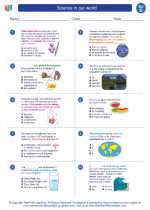Catalysts
A catalyst is a substance that increases the rate of a chemical reaction without being consumed in the process. This means that the catalyst speeds up the reaction but remains unchanged at the end of it. Catalysts work by providing an alternative pathway with a lower activation energy for the reaction to occur, making it easier for the reactants to transform into products.
Types of Catalysts:
- Heterogeneous Catalysts: These catalysts are in a different phase from the reactants, such as a solid catalyst in a liquid or gaseous reaction.
- Homogeneous Catalysts: These catalysts are in the same phase as the reactants, such as a dissolved catalyst in a liquid reaction.
- Enzymes: Biological catalysts that increase the rate of specific biochemical reactions in living organisms.
Importance of Catalysts:
Catalysts play a crucial role in various industrial processes, such as the production of fuels, chemicals, and pharmaceuticals. They are also essential in biological systems for processes like digestion and metabolism.
Study Guide:
- What is a catalyst and how does it affect the rate of a chemical reaction?
- Explain the difference between heterogeneous and homogeneous catalysts.
- Give an example of a biological catalyst and its role in living organisms.
- Discuss the importance of catalysts in industrial processes and provide examples.
- Explain how catalysts contribute to the principles of green chemistry and sustainable development.
Understanding the role of catalysts in chemical reactions is fundamental to various fields, including chemistry, biochemistry, and environmental science.
[Catalysts] Related Worksheets and Study Guides:
.◂Science Worksheets and Study Guides Fourth Grade. Science in our world
Study Guide Science in our world - 4th gr.
Science in our world - 4th gr.  Worksheet/Answer key
Worksheet/Answer key Science in our world - 4th gr.
Science in our world - 4th gr.  Worksheet/Answer key
Worksheet/Answer key Science in our world - 4th gr.
Science in our world - 4th gr.  Worksheet/Answer key
Worksheet/Answer key Science in our world - 4th gr.
Science in our world - 4th gr.  Vocabulary/Answer key
Vocabulary/Answer key Science in our world - 4th gr.
Science in our world - 4th gr. 

 Worksheet/Answer key
Worksheet/Answer key
 Worksheet/Answer key
Worksheet/Answer key
 Worksheet/Answer key
Worksheet/Answer key
 Vocabulary/Answer key
Vocabulary/Answer key

The resources above cover the following skills:
History and Nature of Science: A student should understand the history and nature of science. A student who meets the content standard should:
Develop an understanding that historical perspectives of scientific explanations demonstrate that scientific knowledge changes over time, building on prior knowledge.
Develop an understanding that scientific knowledge is ongoing and subject to change as new evidence becomes available through experimental and/or observational confirmation(s).